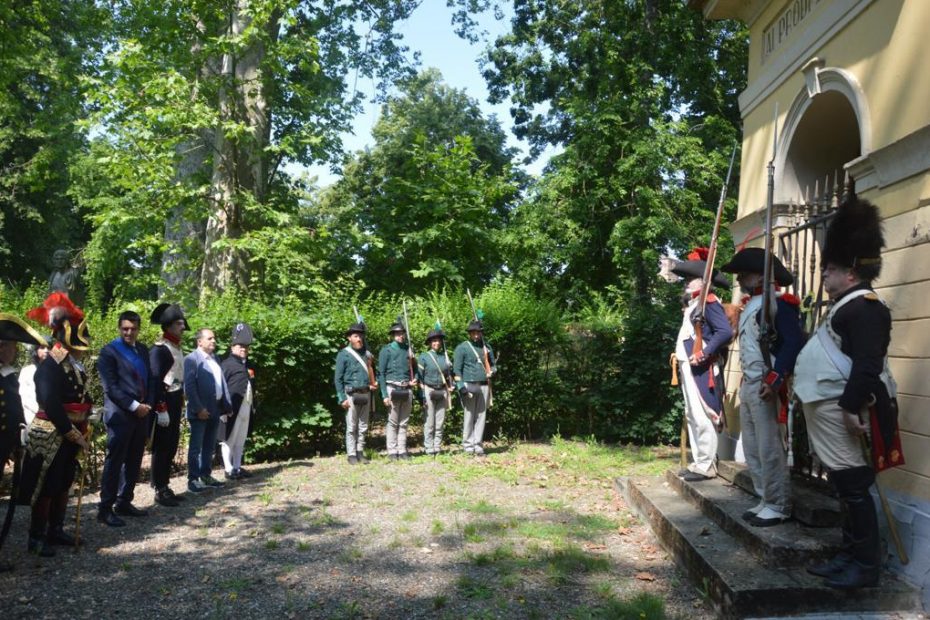The Convention of Alexandria (15 June 1800) initiated the return of Austrian forces to the east beyond the river Ticino and the prohibition of military maneuvers: the triumph at Marengo allowed Napoleon to write the rules and induce Emperor Francis of Austria to stop the disaster for Europe destroyed by the wars and on the battlefield of Marengo covered with blood (about 12 thousand soldiers dead or wounded).
The Primo Cònsole, instructed by errors and inclined to reconcile the revolution to tradition, received praise from the people of Lombardy (16 June 1800) and lapped the faith at the Te Deum officiated at the cathedral of Milan. Napoleon, skeptical and saturated with the Enlightenment culture, understood the need to extend the peaceful coexistence desired by millions of men.
The armistice was reported to the rites and the journey of steeds harnessed and guided by General of the General Staff Andrea Puleo to lead five riders trotting on the rural route stretched from the Villa Delavo Marengo to the farm of Torre Garofoli open to reenactors french knights (10ème Escadron) by Baron Guidobono Cavalchini for the visits managed by the FAI (Tortona delegation) to the site where Napoleon signed the peace treaty with Von Melas. The countryside of Fraschéta was lapped by the fusion of rock sound of motorcycles and beating of horse hooves: the transit on the driveway was protected at the crossroads by the motorcycle club “Polizia di Stato – delegation of Asti” directed by President Claudio La Piana.
“The brand Marengo – was said by President Enrico Bussalino (Province of Alessandria) – enhances the vast area of Alessandria on the Italian scenario and pushed by reenacting extends abroad”. The epilogue to the event “Marengo terre belle in quattro tappe” was praised by Mayor Federico Chiodi (Municipality of Tortona) and by the provincial and regional administrations for the bronze Eagle returned from the city of Rijeka thanks to the patriot Gabriele D’Annunzio (as narrated by the lawyer Luigi Vatta in the presence of the Regional Councillor Vittoria Poggio) hoisted on the granite column opposite the Villa Delavo and reproduced on the oval plate given to teachers at the European School for Napoleonic re-enactors. S.E.R.N., the educational branch wanted by the Union European Journalists and Communicators (Ujce) for reenactors and educators of schools to “browse stories of people” as stated by the reenactor Roberto Colla, often the Italian interpreter of Napoleon.
The reenactor displays uniforms, tools to create the plausible remake of vintage scenarios and, thus, transfer the pills of the past from the history book to the ceremonies-event. The experimental and reconstructive archaeology precedes the re-edition of ancient activities and crafts and the Castle of Piovera was set up dinner based on the menu of ancient recipes interpreted by students at the Santachiara Institutes of Tortona and Ciofs Piemonte of Alexandria.
